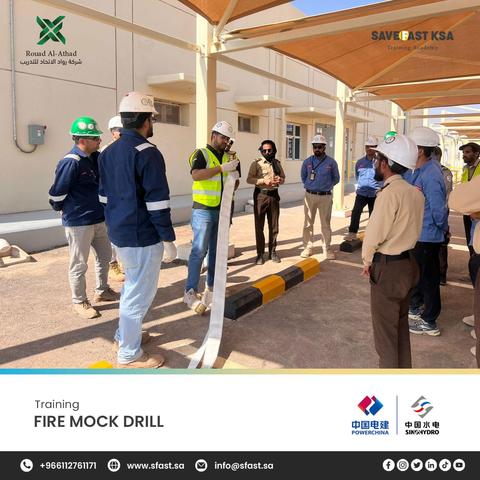MENA’s Sports Investment Boom: Economic Diversification
Author(s): Scott Douglas Jacobsen
Publication (Outlet/Website): The Good Men Project
Publication Date (yyyy/mm/dd): 2025/05/04
Michael Ashley Schulman, CFA, is the Founding Partner and Chief Investment Officer (CIO) of Running Point Capital Advisors, a multifamily office overseeing global macro strategy, investment management, and impact assessments across public and private markets. Schulman highlights the MENA region’s shift toward sports investment as a key diversification strategy under Vision 2030 initiatives. With a 16.5% CAGR through 2030, investments in stadiums, esports, and global partnerships aim to boost tourism, media, and sponsorship revenues. Qatar, Saudi Arabia, and Oman lead with privatization efforts, grassroots programs, and high-profile club stakes. While market immaturity and asset bubbles pose risks, community-driven initiatives and youth training programs enhance long-term growth. The region’s modernized sports landscape offers premium spectator experiences but faces over-commercialization, infrastructure concerns, and cultural tensions amid rapid transformation.
Scott Douglas Jacobsen: What is important to know about the MENA region regarding economic diversification?
Michael Ashley Schulman: I’ve commented a few times in the past about MENA and GCC development, though usually about U.S. markets. Vision 2030 is specifically a Saudi initiative begun nearly nine years ago in April 2016; but oil still accounts for nearly 3/4s of Saudi fiscal revenue To me, one of the most interesting diversification angles is the investment-cultural approach, especially with sports.
The MENA region is rapidly transforming its sports landscape—from high-profile events like the Qatar World Cup to strategic investments in premier clubs and leagues around the world—positioning itself as a powerhouse in global sports. With a projected CAGR of 16.5% through 2030, investors can look beyond the immediate glamour of marquee deals to the underlying drivers of economic diversification, tourism enhancement, and broader media and sponsorship opportunities, i.e., in ancillary sectors such as hospitality, technology, and consumer brands tied to sports experiences.
As long as valuations don’t outpace realistic projections there is a long runway here for growth, especially in the areas of aspirational youth-sports training camps for developed and emerging market parents that want their children to have the best physical and developmental opportunities in a world that is paradoxically getting glued to their smartphone and computer screens.
Jacobsen: How are MENA countries investing?
Schulman: Middle Eastern countries (notably Qatar, Saudi Arabia, and Oman) are channeling massive investments into sports as part of broader economic diversification strategies (e.g., Qatar National Vision 2030, Saudi Vision 2030, Oman Vision 2040). These initiatives aim to transform the region into global sports hubs, with projected market values (such as Qatar’s sports market reaching an estimated $3.7 billion by 2025) that signal strong growth potential.
State-of-the-art stadiums, training centers (like Aspire Zone in Qatar), sustainable sports facilities, and hosting landmark events (e.g., the FIFA World Cup 2022, upcoming FIFA World Cup 2034 bids, major international tournaments) enhances international visibility and offers investors a platform to tap into a global audience.
With substantial investments in digital technologies and esports ecosystems—ranging from broadcasting deals to purpose-built gaming arenas—the region is not only modernizing traditional sports but also capturing the interest of younger, tech-savvy audiences, which creates new revenue streams and opportunities for innovation-driven investments.
Initiatives like the privatization of sports clubs in Saudi Arabia and strategic partnerships (for example, Qatar’s stake in top European football clubs) provide a framework for sustainable revenue generation and risk sharing where such collaborations are designed to integrate global expertise and boost the competitiveness of domestic sports markets.
Investments that are coupled with community-driven initiatives (like the Generation Amazing Foundation and grassroots sports programs) promise not only financial returns but also measurable social impact which can be appealing to impact investors looking for sustainable, legacy-building projects.
Jacobsen: What about immaturity of the market?
Schulman: Market maturity is a concern—sports sectors in these regions are still developing, which can lead to volatility, lower liquidity, and limited historical performance data to inform valuations. There’s also the risk that overinvestment in sports could lead to asset bubbles if enthusiasm outpaces fundamental growth, especially if global sports media rights and sponsorship revenues do not materialize as projected.
Jacobsen: What about the ecosystem of provisions for sports fans there with this?
Schulman: For sports fans, the region’s transformation offers a comprehensive ecosystem of benefits including world-class venues hosting major events, enhanced digital and esports engagement platforms, robust youth development programs producing local talent, and community-focused initiatives that blend cultural heritage with global sports. This investment fueled integrated approach delivers both premium spectator experiences and deeper community connection, particularly resonating with younger audiences through modern facilities and digital innovation.
On the other hand, fans may face significant challenges including inconsistent infrastructure quality, over-commercialization threatening local sporting identity, logistical issues at major events, and social tensions arising from rapid cultural changes. These factors can impact the fan experience through overcrowding, safety concerns, and cultural conflicts, particularly when progressive initiatives clash with traditional values.
Jacobsen: Thank you for the opportunity and your time, Michael.
Last updated May 3, 2025. These terms govern all In Sight Publishing content—past, present, and future—and supersede any prior notices. In Sight Publishing by Scott Douglas Jacobsen is licensed under a Creative Commons BY‑NC‑ND 4.0; © In Sight Publishing by Scott Douglas Jacobsen 2012–Present. All trademarks, performances, databases & branding are owned by their rights holders; no use without permission. Unauthorized copying, modification, framing or public communication is prohibited. External links are not endorsed. Cookies & tracking require consent, and data processing complies with PIPEDA & GDPR; no data from children < 13 (COPPA). Content meets WCAG 2.1 AA under the Accessible Canada Act & is preserved in open archival formats with backups. Excerpts & links require full credit & hyperlink; limited quoting under fair-dealing & fair-use. All content is informational; no liability for errors or omissions: Feedback welcome, and verified errors corrected promptly. For permissions or DMCA notices, email: scott.jacobsen2025@gmail.com. Site use is governed by BC laws; content is “as‑is,” liability limited, users indemnify us; moral, performers’ & database sui generis rights reserved.
#economicTransformation #esportsEcosystem #sportsDiversification #Vision2030 #youthDevelopment












